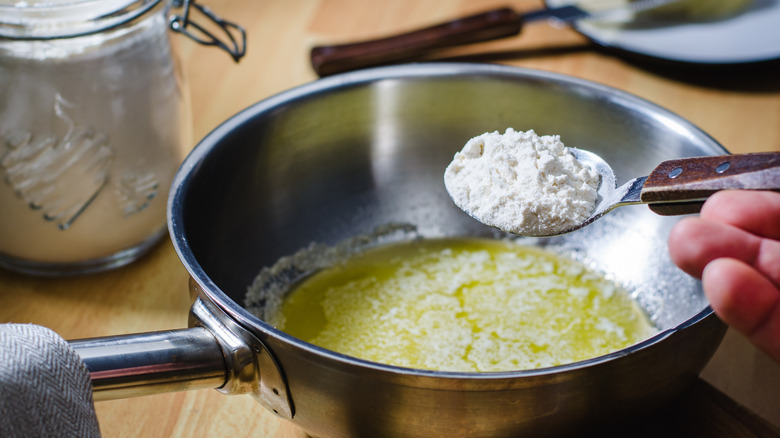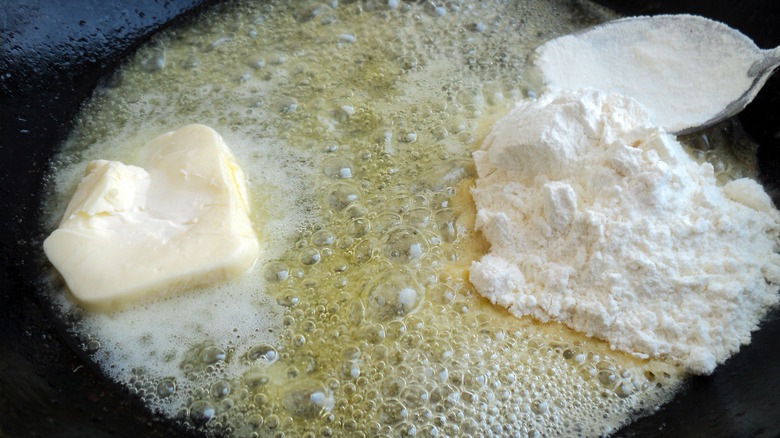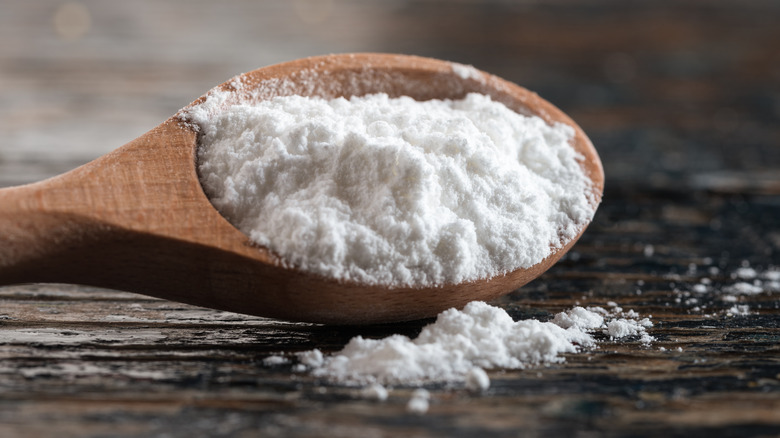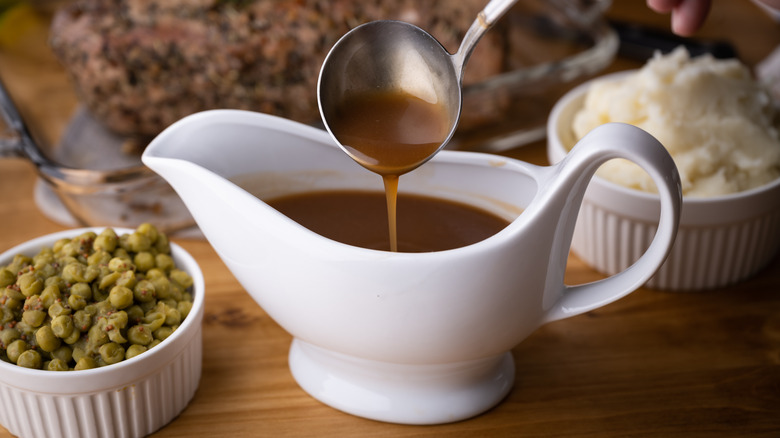Roux Vs. Slurry: What's The Difference?
What is gumbo without its thick, gravy-like consistency? Or sweet and sour sauce without its glossy viscosity that runs slowly over fried shrimp? Lots of dishes, including stews and sauces, require some type of thickening agent. Roux and slurries are the two most common additives that get the job done, but they give your dish different finishing flavors and textures.
Roux, French in origin, is a butter-based paste that requires attention and care. Michelin Guide reports the importance of roux, which serves as a base for four out of five French cuisine Mother Sauces. Slurry, on the other hand, is composed of cornstarch and water, and is predominantly used in Chinese cooking. SBS notes that this method of thickening is used across Asia, from Taiwan to Singapore, and you'll find that cornstarch is a pantry staple in these regions. But the differences between these two thickening agents go beyond where they are used. Each can actually be used in place of the other, if your dish suits it.
What is a roux?
Roux is made of a one-to-one ratio of flour and butter (or another fat). This seminal French paste was invented in the 17th century during the Sun King's reign (Louis the Great's time in power), according to Michelin Guide. Roux starts with a melted knob of fat and roughly equal parts flour over medium heat, per Cookist. The fat of choice for a roux is butter, specifically clarified butter, but Cookist states that beef drippings, lard, and even vegetable oil work, though they result in different colors and flavors.
Once the flour is combined with the heated fat, the starch content of the flour becomes individually coated, thus remaining separate. The science behind this can be explained by hydrophobic molecules binding to flour, so that when the broth or water is added to the roux, the starch molecules can expand uniformly, creating a thicker sauce (via Michelin Guide). Cookist distinguishes roux by their color, which can be white, blond, or brown. The color of a roux depends on how long you decide to cook it, and a darker roux can add caramelized flavor to your gravy. In fact, some chefs even toast their flour dry before combining it with melted butter, as this ensures a brown color without running the risk of burning the milk fats. Of course, the flavor is also affected by the fat you choose: Butter will give you a richer body over vegetable oil, but vegetable oil might be better if you want a cleaner-tasting sauce.
What is a slurry?
While a roux is added to an empty pan as a base for the sauce or gravy you're making, a slurry is added as the finishing touch. Just One Cookbook's recipe for a good cornstarch slurry suggests a one-to-two ratio of cornstarch to water. And this makes perfect sense: Roux is made with a one-to-one ratio because flour has a lower starch content than cornstarch.
The greatest challenge when preparing a roux is to avoid burning it, while a cornstarch slurry is difficult to prevent from clumping. Once the cornstarch is combined with water, you must vigorously whisk the mixture so that it dissolves seamlessly into the liquid. Interestingly enough, cornstarch slurry remains a watery liquid until it is introduced to heat, which triggers a process known as "starch gelatinization." Starch molecules swell and thicken the soup into a gelatinous texture, per The BC Cook Articulation Committee. Like a roux, there are slight adjustments you can make to your slurry according to your preferences or the ingredients available in your pantry. Just One Cookbook notes that arrowroot, potato starch, or tapioca flour can be used in place of cornstarch, although you'd have to use twice as much tapioca flour compared to cornstarch.
Once a slurry is added to a sauce, it quickly thickens into a glossy, viscous consistency, giving your sauce a sheen that a roux-based gravy lacks.
When should I use each?
Since roux is European in origin, it only makes sense that it suits Western sauces and gravies, especially those that are opaque and meaty in flavor. A roux provides a more rustic way to thicken your sauce, given that you're frying up flour and fat into a paste. Using some type of animal fat and flour would definitely add a dimension to your gravy or soup that a slurry-thickened sauce lacks. Add the component of a deepened caramelized flavor with the Maillard reaction, and you'll find that a browned roux is more favorable for gravy or for Cajun stews like etouffee. Roux can also be used in Asian dishes, especially for opaque sauces like Japanese curry.
A slurry is a cleaner and purer way to thicken your sauce. If you don't want any added richness or milk protein flavor, a slurry will be your best option. This may explain why slurries are most commonly used in Asian dishes like egg drop soup and jjajangmyeon. Both dishes have a semblance of richness in their thick consistency, but their flavors come from the stock base or vegetables. Is it possible to use a slurry for Western dishes? It's definitely possible, according to Kitchn, although it results in a one-dimensional, smooth gravy.
Using a roux requires more patience, as you need to wait for your added liquid to thicken slowly as you whisk. A slurry is more intense and thickens your sauce immediately, so it also depends on how much time you have on your hands.



